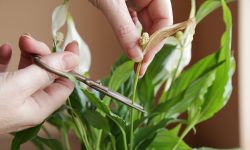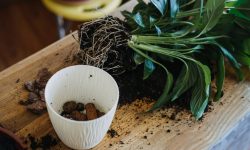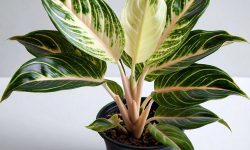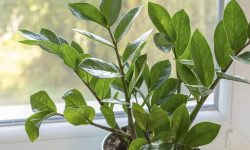Chinese evergreen is a reliable houseplant that rewards patience with steady growth and graceful foliage. Many growers want more plants without buying new ones, and propagation offers that chance. You can create fresh starts from a single parent plant and shape a small indoor jungle with ease. Propagation also helps you refresh older plants and keep their growth vigorous. Each method works in a simple way and gives you control over your plant collection. You only need a few tools and some time to guide each new plant toward strong roots. When you follow the right steps, the process becomes calm and enjoyable. You learn how the plant responds to care and light, and you gain confidence. New roots begin to form, and the first leaves appear soon after. The cycle feels natural, and each success brings more curiosity.
Growing new Chinese evergreen plants is a rewarding process for beginners and experienced gardeners. The plant handles stress well and recovers quickly during propagation. You can divide its root system or root a cutting in clean water without much effort. Each method gives you a healthy young plant with strong potential. When you understand how the plant behaves, you can adjust your approach and avoid mistakes. Steady humidity and gentle light support new growth and protect tender roots. Clean tools and fresh soil also guide each division or cutting toward stable development. The process feels slow at first, but each change shows progress. Soon, new stems emerge and mature leaves unfurl. The result is a thriving plant that carries the same resilience and beauty as the parent.
Understanding Chinese Evergreen Propagation
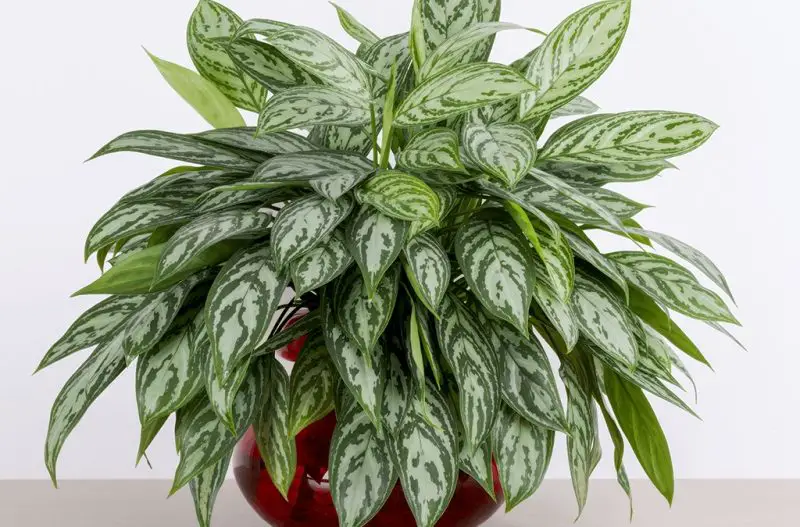
Chinese evergreen adapts well to indoor conditions and responds smoothly to propagation efforts. The plant maintains stable moisture in its thick roots and steady energy in its dense stems. These traits allow each new start to form roots without heavy stress. Propagation succeeds when the parent plant stores enough strength for new growth. You support that process with clean cuts and careful handling. The plant reacts well to slow changes in its environment and shows clear signs when conditions improve. Healthy leaves stay firm and carry a bright surface. New roots expand when humidity remains steady and light stays gentle.
Propagation works through simple biological processes that happen below the soil line. The plant forms calluses at cut points and sends tissue forward to create root primordia. These structures push outward and develop into stable roots. Temperature influences this pace, so warm rooms support quicker growth. Soil texture also plays a major role. Loose soil allows easy movement of oxygen and water. These elements guide young roots and prevent stress. Good drainage prevents rot and encourages fresh development. Each factor shapes the plant’s success during early growth.
Timing affects propagation outcomes and defines how well cuttings or divisions adapt. Chinese evergreen grows strongest during warm months when daylight remains consistent. Propagation at that time supports faster stability and healthier roots. Cooler seasons slow reactions and reduce root formation. You can still propagate then, but patience becomes important. Observing leaf color helps you understand each change. Dark leaves can show low light, while pale leaves may signal shock. Gentle adjustments help the plant recover. Every stage reveals how the plant adapts and prepares for strong growth.
Preparing Your Tools and Materials
Propagation becomes easier when you gather every tool before you begin. Chinese evergreen responds well to clean and simple equipment. You need sharp scissors or a pruning knife that leaves smooth cuts. Clean blades prevent infections and reduce tissue stress. A small container helps you handle cuttings without damage. You also need fresh potting soil with a loose texture. This soil supports airflow and steady moisture. A spray bottle maintains humidity during the first days. Light gloves protect your hands and prevent accidental bruising of the stems. When your tools stay clean, each step feels smoother.
The soil blend plays a major role in successful propagation. Chinese evergreen prefers soil that holds moisture but drains excess water. A mix with peat and perlite works well for early root formation. These materials keep the soil soft and easy for new roots to enter. You can adjust the mix to match your climate and indoor humidity. Warm rooms may encourage faster drying, so adding extra peat improves moisture retention. Cooler rooms may hold moisture longer, so more perlite increases drainage. Each adjustment helps the plant remain stable during its early weeks. Soil preparation protects each new cutting from rot and shock.
Containers also influence how the plant develops after propagation. A pot with a small diameter supports strong root formation. Large pots hold extra moisture and slow development. Drainage holes remain essential for healthy roots. Water must escape freely and avoid pooling near tender tissue. Clean the container before use to remove bacteria and old residue. Transparent containers work well for water propagation because you can watch root progress. Still, avoid placing them in direct sun because strong light heats the water. Each choice you make guides the plant toward stable growth and long-term success.
Choosing the Right Propagation Method
Chinese evergreen allows several propagation methods, but each method fits different situations. Stem cuttings work well when the parent plant grows long and healthy shoots. Divisions support older plants with dense clumps near the base. Water propagation helps beginners who want to observe roots in clear containers. Each method offers unique benefits and requires specific steps. The plant responds well when you choose the method that matches its current condition. Observing stem strength and root density helps you make the right decision. Good choices lead to better growth and faster stability.
Stem cuttings remain a popular method because they root quickly under consistent humidity. You select a mature stem with several leaf nodes and remove lower leaves. These nodes become the starting point for root formation. Warm rooms help the cutting adjust and push roots forward. Soil cuttings need loose soil that supports airflow and moisture. Water cuttings need clean containers and steady room temperatures. Both approaches work well when light stays indirect and gentle. You can move successful cuttings into soil after roots reach a stable length. Each cutting reveals the plant’s resilience during early development.
Division fits situations where the parent plant grows crowded and needs space. You remove the plant from its pot and separate sections with gentle movements. Each section must contain strong roots and at least one healthy stem. Clean hands and smooth handling reduce stress. Divisions adapt well to fresh soil and stable moisture. They grow faster than cuttings because they begin with mature roots. Still, they need protection from strong light during early days. Stable humidity helps the roots settle and expand. Each division becomes a new plant with firm potential.
Taking Healthy Stem Cuttings
Stem cuttings give you a simple way to create new Chinese evergreen plants. The process begins with careful observation of the parent plant. You search for stems that show firm structure and balanced color. Avoid stems with weak or drooping sections because they root slowly. Choose growth that sits near the mid-section of the plant rather than the oldest base stems. This area carries strong energy and stable moisture. Clean your blade before cutting to prevent fungal issues. Make a smooth cut below a node and keep the stem steady. Each small action supports successful rooting.
After making the cut, you prepare the stem for early growth. Remove leaves that sit close to the lower end because they may rot in soil. Keep a few leaves near the top to support photosynthesis. These leaves help the stem maintain energy during the rooting phase. If the stem bleeds moisture, let it rest for a short time. A brief rest forms a callus that protects the cut surface. You can dip the lower end in rooting powder if you want faster results. The powder helps stimulate early root activity, especially in cooler rooms. This step remains optional but useful.
Once the cutting is ready, place it in soil or water depending on your chosen method. Soil provides stability and faster adaptation, while water offers visibility. Maintain warm temperatures and gentle light during the first weeks. Keep humidity steady with light misting, but avoid heavy watering. Roots begin forming near the lower nodes and expand when conditions stay stable. Observe the cutting each day and adjust moisture if needed. Early roots remain delicate, so handle the stem carefully. When roots grow strong and thick, the cutting becomes ready for its next stage.
Rooting Chinese Evergreen Cuttings in Water
Water propagation allows you to observe each stage of root growth with clarity. This method works well for beginners because it removes the guesswork around soil moisture. Start with a clean glass container that offers enough depth for the stem. Place the cutting so the lower nodes sit beneath the water surface. Keep leaves above the water to prevent decay. Use room-temperature water to protect tender tissue from shock. Position the container in a bright area with filtered light. Strong sun may heat the water and harm developing roots. Replace the water when it turns cloudy.
Roots begin forming slowly during the first weeks. You may notice tiny white bumps near the nodes. These bumps signal early root primordia that will lengthen with time. Maintain clean water throughout this phase to protect the cutting from bacteria. Stable temperatures encourage faster root expansion. Avoid moving the cutting too often because movement stresses new roots. Watch for dark or mushy tissue, which may indicate rot. If that happens, trim the damaged area and refresh the water. Remaining patient helps you guide the cutting through each subtle change.
Once the roots reach a firm and visible length, the cutting becomes ready for soil. Prepare loose soil that drains well and supports airflow. Transfer the cutting with gentle movements and keep the root system intact. Water lightly to help soil settle around the roots. Avoid overwatering during the first days because roots adapt slowly. Gentle light continues to support steady growth. You will see new leaves appear once the root system strengthens. The plant adjusts to soil at its own pace and soon grows like a mature Chinese evergreen.
Rooting Chinese Evergreen Cuttings in Soil
Soil propagation offers stability for cuttings that need quick adaptation to long-term growth. This method suits growers who prefer a single transition without moving the plant again later. Begin with fresh soil that feels soft and airy. A blend with peat and perlite supports early root activity. Insert the cutting so the lower nodes stay slightly beneath the surface. Press the soil gently around the stem to create contact. Keep the pot small to prevent excess moisture. Place the pot in a warm location with filtered light. Consistent conditions help the cutting adjust from the first day.
Moisture plays a major role during the early rooting phase. Water lightly to avoid soggy soil that may slow root formation. The soil must feel slightly damp but never wet. Use a spray bottle if you want finer control. Humidity also helps new tissue remain flexible and responsive. You can cover the pot with a loose plastic dome for short periods. This dome raises humidity and speeds early activity. Remove the dome daily for airflow. Good airflow reduces fungal issues that often damage young cuttings. The plant responds well when each variable stays balanced.
Signs of successful rooting appear slowly but clearly. You may see brighter leaf color or firmer stems after several weeks. New leaves often form near the top nodes once roots strengthen. Avoid tugging the cutting to check progress because movement may break early roots. Instead, observe growth above the soil. When new leaves appear, the cutting has reached a stable stage. You can then increase light slightly to support steady development. Continue watering with care to avoid stress. As roots expand, the plant begins to grow like a mature specimen with strong potential.
Propagating Chinese Evergreen by Division
Division works well for mature Chinese evergreen plants with dense clusters near the base. This method provides new plants with established roots from the very beginning. Start by watering the parent plant lightly a day before dividing. Moist soil helps you separate the roots without breakage. Remove the plant from its pot with slow movements. Support the base to avoid bending the stems. Hold the root ball with both hands and look for natural separation points. These points appear as small clusters growing from shared roots. Work gently to avoid tearing healthy roots.
Once you find the separation points, ease the clusters apart with steady pressure. Use your fingers rather than pulling sharply because slow handling protects the roots. If the roots tangle heavily, rinse the soil with lukewarm water. Rinsing exposes the structure and helps you separate cleanly. Each division must contain a healthy stem and several intact roots. Trim damaged roots with clean scissors to prevent rot. Keep the roots moist during the process, but avoid soaking. Prepare fresh soil in advance so each division can settle quickly. Early placement prevents stress.
Plant each division in a pot that matches its size. A pot that feels slightly snug supports root stability. Fill the pot with loose soil and create a firm center space for the division. Position the roots evenly and pack the soil gently around them. Water lightly to help the soil settle. Place each new plant in filtered light to avoid shock. Divisions usually adjust faster than cuttings because they begin with mature roots. You will see steady growth as the plant settles. New leaves appear once the roots strengthen fully and adapt to the fresh soil.
Creating Ideal Conditions for Fast Root Growth
Stable environmental conditions help Chinese evergreen cuttings and divisions root faster. Warm temperatures support cell activity and encourage steady development. The plant responds best to mild warmth that mimics its natural habitat. Keep the room warm but not hot, and avoid sudden temperature drops. Gentle light also plays a major role in early growth. Bright indirect light guides tissue activity without stressing tender roots. Strong light may cause dehydration, while low light slows root formation. Balance gives the plant the support it needs during these early weeks.
Humidity directly affects the plant’s ability to form strong roots. Young tissue loses moisture quickly, so consistent humidity protects it from drying. A simple misting routine helps the plant maintain moisture, but careful timing is important. Mist lightly during the morning when air circulation remains steady. Avoid heavy misting late in the day because excess moisture may linger overnight. Good airflow also prevents fungal issues that may harm tender roots. You can improve airflow by keeping space around the plant clear. Each small adjustment shapes the plant’s early growth pattern.
Soil moisture becomes another factor that decides rooting speed. Keep the soil slightly damp without creating soggy conditions. Excess moisture slows oxygen movement and may cause root rot. Water with care and watch how the soil reacts each day. Allow the top layer to dry slightly before watering again. This cycle encourages roots to search for moisture and grow downward. You may notice subtle changes as roots expand. Leaves become firm, and stems show improved color. These signals confirm that conditions support healthy growth. Over time, the plant becomes stable and moves toward strong development.
Caring for Newly Rooted Chinese Evergreen Plants
Newly rooted Chinese evergreen plants need careful attention during their first weeks. The roots remain delicate and require a balanced environment. Keep the plant in bright indirect light to support early leaf activity. Avoid strong sunlight during this phase because young roots dehydrate quickly. Maintain a warm room with stable temperatures. Sudden shifts may slow growth or cause stress. Water with light control and prevent soggy soil. The plant adapts slowly after propagation, so patience becomes essential. Steady conditions help each root settle deeper into the soil.
Humidity continues to influence the plant’s stability during early growth. You can maintain moderate humidity with light misting. Mist the leaves sparingly to avoid wet surfaces overnight. Good airflow supports healthy development and prevents fungal issues. Keep the plant clear of crowded spaces or heavy objects that block air movement. The plant begins forming thicker roots after several weeks of consistent care. Leaves may appear brighter or firmer once the plant adapts. These small improvements show that the plant responds well to its environment and needs only gentle adjustments.
Fertilizing should wait until the plant shows clear signs of new growth. Young roots absorb nutrients slowly, so early feeding may cause stress. Wait until new leaves appear before introducing mild fertilizer. Use diluted liquid fertilizer to avoid overwhelming the developing roots. Provide small amounts during warm months when growth stays active. Avoid fertilizer during cold periods because the plant slows its natural activity. Monitor growth patterns to understand the plant’s needs. As roots expand, the plant becomes more stable and begins to grow like a mature specimen. Consistent care builds a strong base for long-term health.
Avoiding Common Propagation Mistakes
Choosing Healthy Material for Propagation
Healthy growth starts with strong plant material that adapts well to new conditions. Many failures begin with weak stems or stressed divisions. Stems with dark patches or soft spots struggle to form roots. Older stems near the base also root slowly because they hold less active energy. Select stems with bright color and firm structure to ensure stable development. Divisions need strong roots that appear white or light tan. Crowded root balls require careful handling because forceful separation damages delicate tissue. Rinse tangled roots gently with lukewarm water to expose natural separation lines. Clean tools remain essential because contamination spreads quickly during early stages.
Healthy preparation continues after selecting the right material. Remove damaged leaves because they attract bacteria and slow recovery. Give stems a short resting period if sap appears after cutting. This rest helps the wound form a callus that prevents rot. Keep divisions moist during transfer but avoid soaking them because excess water reduces oxygen flow. Balanced moisture supports early adaptation and protects tender roots. Each careful action reduces stress and builds a strong foundation for propagation. Healthy material responds faster to light, humidity, and warmth, which leads to stronger growth.
Managing Light, Moisture, and Handling Errors
Light and moisture remain major factors that shape early growth. Many growers place cuttings in strong sunlight, causing leaf scorch and rapid dehydration. Low light slows tissue activity and delays root formation. Bright indirect light offers the safest balance for new plants. Moisture mistakes also affect progress because wet soil blocks oxygen and encourages rot. Allow the top layer of soil to dry slightly before watering again. Water control becomes vital during the first weeks because roots remain delicate and slow to adjust.
Handling mistakes slow progress even more. Rough movements break young roots and create hidden stress. Avoid tugging cuttings to check progress because movement harms early growth. Fertilizing too early also creates problems because young roots absorb nutrients poorly. Wait for clear new leaves before adding mild fertilizer. Keep the environment stable and free from sudden temperature shifts. Drafts or heat sources cause fluctuations that weaken tender roots. Observing the plant daily helps you detect issues before they intensify. Small adjustments guide each new plant toward strong development and long-term stability.
Preventing Temperature and Humidity Stress
Temperature fluctuations create major setbacks during propagation because young roots react slowly to sudden change. Warm conditions support early cell activity, but extreme heat causes dehydration. Cold rooms slow development and increase the chance of rot. Keep the plant away from air conditioners, heaters, and open windows. Stable warmth encourages consistent growth and helps each cutting maintain energy. Humidity also decides how fast tissue adapts after propagation. Low humidity dries new leaves quickly and weakens their structure. High humidity encourages fungal problems if airflow remains poor. Controlled humidity protects each developing plant.
Maintaining a stable climate requires gentle adjustments rather than rapid changes. Use a humidity gauge if the room shifts too often. Light misting helps increase moisture, but avoid soaking the leaves because excess moisture invites fungus. Improve airflow by spacing pots apart and preventing crowded shelves. Air movement supports healthy tissue and reduces surface moisture during cooler nights. Watch the plant daily to understand how it reacts to the environment. Leaves that droop may signal low humidity or cold conditions. Brighter and firmer leaves suggest stable adaptation. A consistent climate builds long-term root strength and steady growth.
Troubleshooting Slow or Stalled Root Growth
Slow root growth often begins when environmental conditions drift away from the plant’s natural needs. Chinese evergreen responds best to balanced warmth and consistent humidity. If temperatures fall too low, root activity slows dramatically. Warmth encourages faster cell development and helps new roots expand. Low humidity also weakens young tissue and forces the plant to conserve moisture rather than grow. Check the surrounding climate and adjust gradually. Use gentle warmth and controlled misting to lift humidity. Once conditions stabilize, the plant often resumes steady growth without major intervention. Careful observation helps you correct issues before they worsen.
Slow growth also occurs when soil conditions resist airflow or retain too much moisture. Soil that stays wet blocks oxygen and restricts early root movement. Dry soil creates stress and prevents roots from expanding. Both extremes cause stalled progress. Use soil that drains well yet holds gentle moisture near the root zone. Check the soil with your fingers rather than relying on a schedule. Allow the top layer to dry slightly before watering again. Good airflow within the soil encourages root exploration. Once moisture balances, roots begin to strengthen and move deeper. These small adjustments correct most early setbacks.
Propagation may also stall when the cutting or division loses energy. Weak stems or damaged roots require more time to adapt. Older stems may struggle because they hold less active growth tissue. Light stress also slows recovery because the plant absorbs less energy. Provide bright indirect light to help the plant rebuild strength. Avoid heavy fertilizer during slow phases because young roots absorb nutrients poorly. Wait until new leaves appear and then feed lightly. Patience becomes important during these periods because the plant recovers at its own pace. When conditions improve, growth resumes with stable and predictable progress.
FAQs About Propagating Chinese Evergreen
How long does Chinese evergreen take to root during propagation?
Chinese evergreen usually forms early roots within four to six weeks. Water propagation shows root growth sooner because visibility helps adjustments. Soil propagation takes longer but creates stronger early stability. Warm temperatures and gentle humidity help roots develop faster. Avoid sudden shifts because young tissue reacts slowly and loses energy.
Why do my Chinese evergreen cuttings turn yellow after propagation?
Yellow leaves often come from excess moisture or low light. Wet soil reduces oxygen and stresses new roots. Low light slows energy production and weakens leaves. Adjust watering to prevent soggy soil. Provide bright indirect light to support recovery. Most cuttings improve once conditions stabilize and moisture balances correctly.
Can I propagate Chinese evergreen in winter?
Propagation in winter remains possible but usually slower. Cold rooms reduce root activity and delay new growth. Light levels also drop and limit energy production. Use gentle warmth and stable humidity to support the process. Expect longer adaptation periods. For best results, propagate during warm and bright seasons.
Should I use rooting hormone for Chinese evergreen cuttings?
Rooting hormone helps cuttings form roots faster, especially in cool rooms. It supports early callus formation and reduces tissue stress. Hormone use remains optional because Chinese evergreen roots naturally under stable conditions. Apply a thin layer to the lower node and avoid excess powder. Balanced humidity remains more important.
Why do my propagated plants stop growing after being moved to soil?
Growth stalls when roots experience stress during transition. Water-grown roots adapt slowly to soil because they lack protective layers. Soil texture or heavy moisture may also slow development. Keep soil loose and slightly damp. Provide bright indirect light and stable warmth. New growth resumes once roots strengthen and adapt.
Conclusion
Propagating Chinese evergreen offers a simple path to creating more healthy plants. Each method works reliably when conditions stay stable and gentle. Warmth, moisture, and indirect light guide every stage of early growth. Cuttings and divisions adapt well when handled with care. Soil texture and clean tools also shape successful results. Patience remains important because the plant develops at its own pace. Small signs of progress appear as roots strengthen and leaves brighten. With steady attention, each new plant becomes a strong addition to your indoor space. The process feels rewarding and inspires deeper appreciation for steady plant growth.

